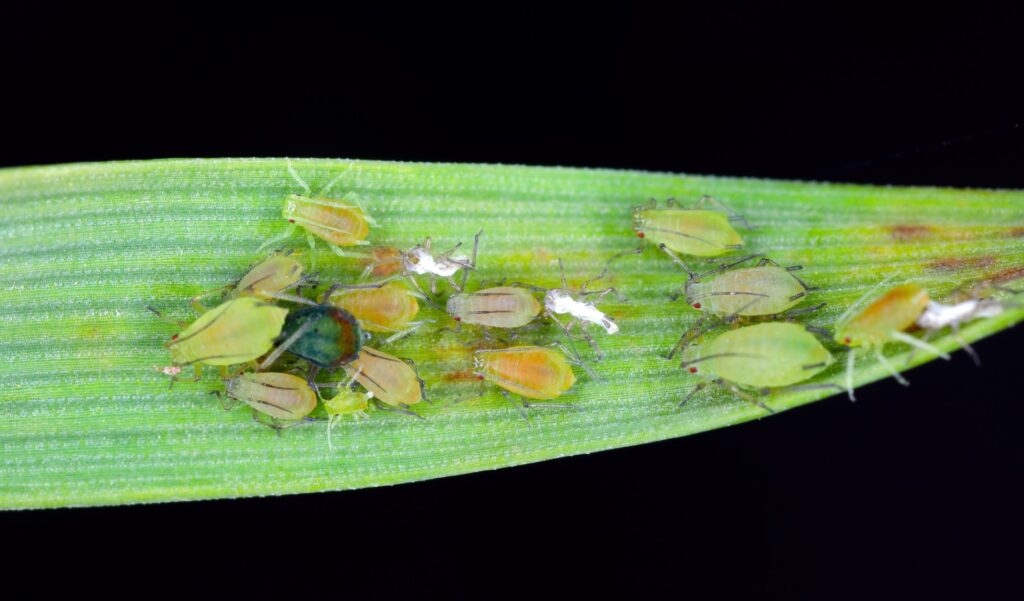Protect cereals from heightened insect risk this autumn
Cereal growers must remain vigilant for signs of insect pest activity, and be prepared to treat crops if necessary, advises leading agronomy firm Hutchinsons ...
Continued mild conditions over recent weeks have led to numerous reports of several pest species in newly emerged and emerging cereal crops, including bird cherry oat aphid, grain aphid, gout fly and leafhoppers, says the firm’s technical manager, Will Foss.
Indeed, Rothamsted Research suction trap data confirms bird cherry oat aphid numbers increased through September, with a few grain aphid found at the beginning of the month. Both species are potential vectors of Barley Yellow Dwarf Virus (BYDV), so any risk needs to be managed promptly as young plants are particularly susceptible to early infection, he says.
“Not all aphids will be carrying virus, but latest data indicates that on average 30% of aphids tested are viruliferous, although with large differences from site to site. This is higher than for the same period in 2024.
“Targeting aphids with a pyrethroid as soon as they migrate into crops is sensible where migration occurs in high numbers, as significant BYDV transmission may occur from these initial winged aphids. Peri-emergence or early post-em herbicide applications provide an opportunity to add an insecticide for early management of insect pests where required.”
Subsequent treatment requirements can be monitored using the TSum170 functionality in Omnia, which predicts the production of two generations of aphid from any new arrivals after the initial pyrethroid application, he notes. “The TSum170 accumulation was rapid during September, occurring in approximately two weeks for most of GB.”
For gout fly and leafhoppers there is no equivalent TSum system, therefore management relies on field observations, he adds
Gout fly
Gout fly are typically 4-5mm long, yellow with black markings, and lay white/ pale cream-coloured cigar-shaped eggs on cereal leaves as soon as crops start emerging. Damaged crops may develop stunted, thickened ‘gouted’, tillers that are most noticeable in early spring.
Treatment thresholds are loosely based on ‘more than 50% of plants having eggs at growth stage 12’, but Mr Foss cautions that although crops might tolerate tiller loss if they can tiller out in the spring, should conditions allow, this is not guaranteed.
“Early attacks are likely to do more damage than later attacks, once the crop starts to tiller, as the larvae could kill the primary tiller. Therefore, early response to the presence of the first gout fly eggs is required, rather than waiting to assess at GS12.”
Leafhoppers
Mr Foss says leafhoppers have been “abundant” in some areas this autumn, with particular activity seen across eastern counties, down into Kent. The pest is 3-4mm long, and very active, hopping and flying around in crops when disturbed.
The main risk from leafhoppers is that they can spread Wheat Dwarf Virus, which affects both wheat and barley, and although shares similar symptoms to BYDV, is not the same, he says.
“If you are regularly disturbing them as you walk across the crop, there may be a requirement to spray.”
Leafhoppers, gout fly, bird cherry oat aphids, and grain aphids, are all susceptible to pyrethroid insecticides, although resistance has been found in a clone of the latter, he notes.
Where deemed necessary, Mr Foss recommends applying pyrethroids at full rate, with an adjuvant to improve efficacy, speed up the knockdown effect, and prevent viral transmission.
